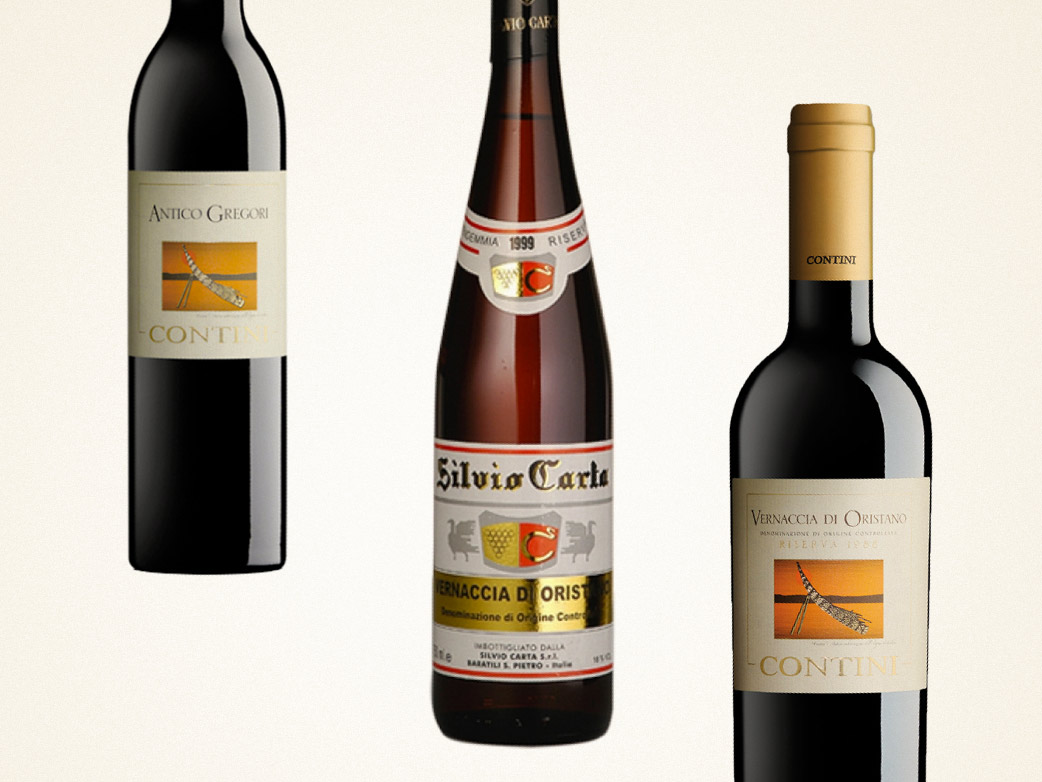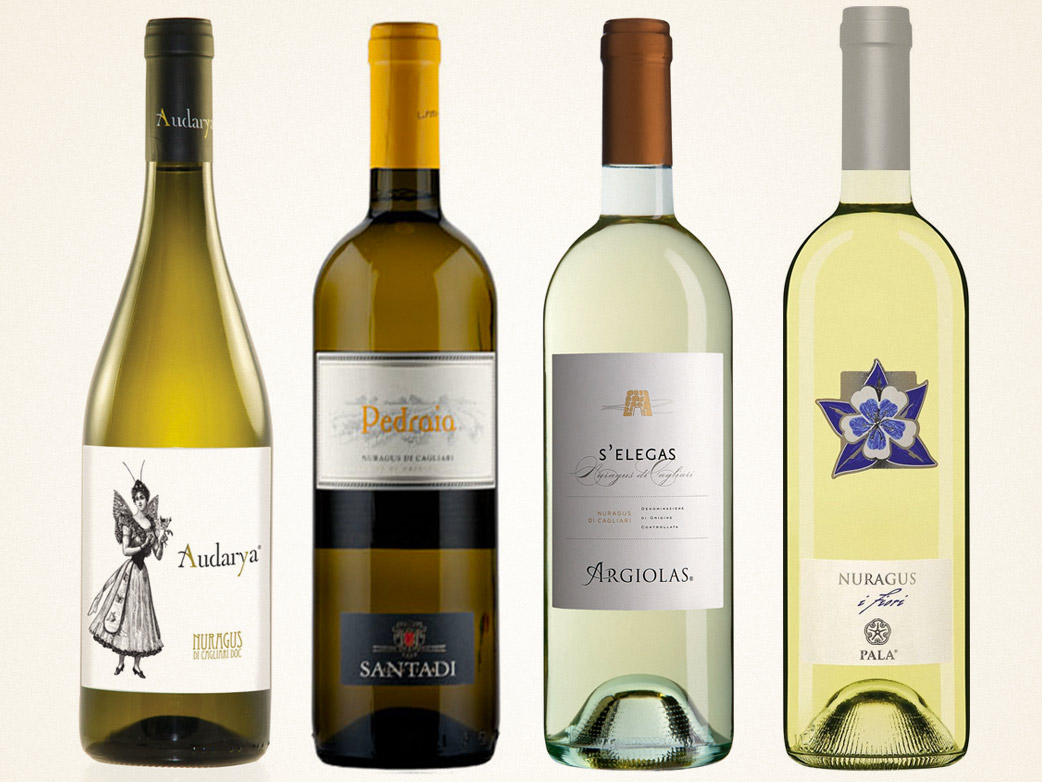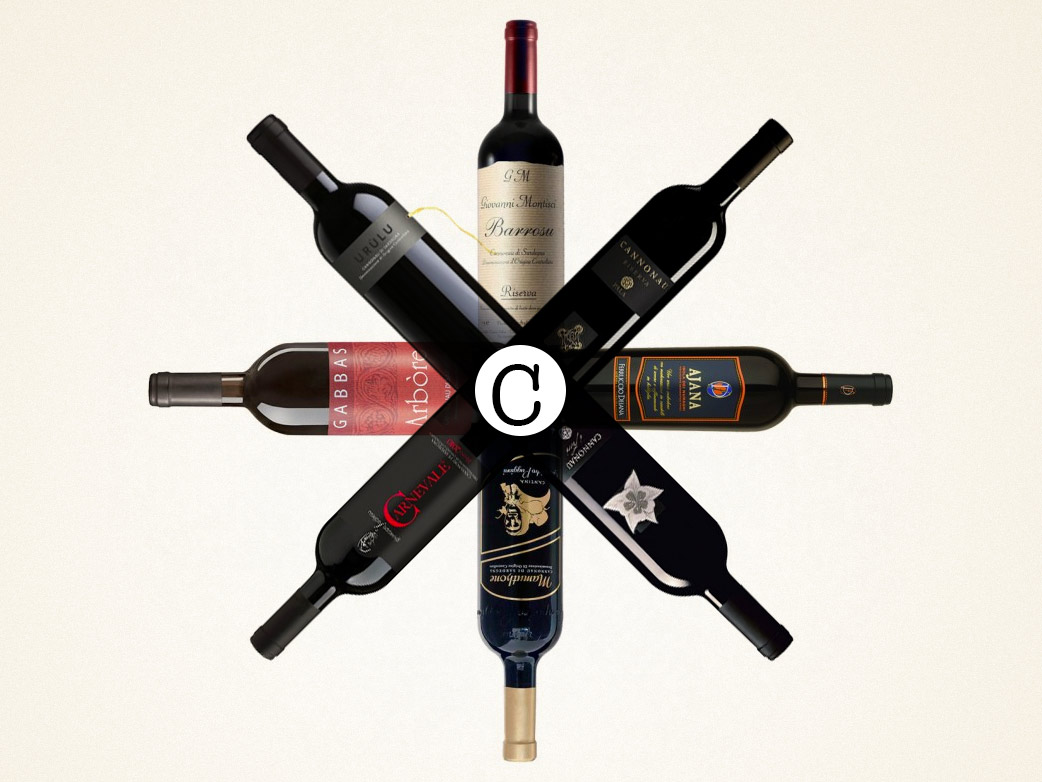Get to know the different varieties of Sardinian wine and where they come from on this exotic Mediterranean island.
Sardinia is one of the best deals Europe has to offer. It has white sandy beaches, turquoise clear waters and a rugged, quintessential island landscape. Actually, Sardinia is even better than that: there’s also a treasure of wines to discover!

Let’s find out Sardinia’s primary wines and start planning your next winecation.

All Hail Vermentino
Start your journey in the northeast corner of the island around the cities of Santa Teresa and Olbia. The granite soils of this region give birth each year to Vermentino di Gallura, a wonderful transparent-to-pale straw-colored white Sardinian wine that’s typically oak-free with bright, refreshing acidity and hints of green apple, citrus fruit, and ripe pear. Vermentino di Gallura is the only DOCG wine of Sardinia — the highest rank of the 4-tier Italian classification.
Vermentino grapes benefit from the sea’s sun reflections and, because of this, are often planted facing north to provide a cooling balance to the region’s hot weather. The windy climate and temperature differences through the night maximize the wine’s acidity and flavor compounds.
Vermentino is typically a still wine, but sparkling versions are not uncommon and pair well with local seafood dishes and regional specialties such as seafood pasta and pane carasau (a wafer-thin flatbread).
Continue west to Alghero, a sea town in the northwest rich in Spanish heritage. It is also home to Sella & Mosca, one of the largest, most acclaimed Sardinian wineries in Italy (a recipient in 2013 of Gambero Rosso’s best Italian winery), with over 1,000 acres of vineyards nestled between sea and hills. The soil is calcium carbonate-rich limestone (a soil type common to some of the best wine regions in the world), and together with a sunny and windy climate, they make for ideal viticulture conditions.
Sardinian Wine Rarity: Torbato
One of the hidden gems in Alghero is Torbato, a grape originally from Spain with only about 200 acres left in the world. Torbato produces refreshing, pale straw wine marked by white flowers and hints of sea minerals.
The sparkling version is a must as an aperitif, but there are also still versions ranging from gentle, mid-low body to richer, creamier versions. All are definitely worth trying with light fish appetizers, oysters, and clam spaghetti.
Cagnulari (a.k.a. Graciano)
On the red side of the spectrum is Cagnulari, a.k.a. Graciano from Spain (where it’s a tiny yet fundamental component in Rioja Gran Reserva). It features a brilliant rust-red color, intense dark berry aromas, and decisive, meaty flavors.
Malvasia
South of Alghero lies Bosa, which is prominently featured in the cult movie Mondovino thanks to its world-renowned Malvasia di Bosa. The grape is well spread all around the Mediterranean and has many versions and vinification methods.
In Bosa, you can find a common sweet version of Malvasia, rich with honeysuckle and chamomile aromas and an intense almond taste with good balancing acidity.
There is also a truly outstanding, dry to off-dry version produced by leaving the casks 85% full so that a layer of yeast called “flor” (Spanish for flower–and also used in Sherry production) forms on the surface of the wine. The flor protects the Malvasia from excessive oxidation while infusing it with a great variety of flavors, from dried fruit to almond and vanilla. It’s a quintessential romantic sunset wine.
Vernaccia
Sardinia’s west coast has more wine variety, especially around the coastal city of Oristano. Vernaccia, as the legend has it, was introduced almost 3,000 years ago by the Phoenicians. On the mainland of Italy, this wine is often light and floral, but in Sardinia, it is a superb, oxidative white wine aged for 3–4 years in casks in a similar production style to Sherry. Look for Vernaccia di Oristano and Vernaccia di Oristano Riserva.
Semidano
Semidano is an elegant white Sardinian wine with hints of white flowers and hay, perfect to combine with local medium-aged pecorino (a sheep’s milk cheese).
Carignano (a.k.a. Carignan)
Continuing south to the corner, we enter the sandy and warm Sulcis region where Carignano (a.k.a. Spanish Cariñena/Mazuelo and French Carignan) is king in the south with over 4,000 planted acres. It’s an aristocratic red wine with an intense garnet color and sweet spiced aromas of cinnamon and clove. The body is full, yet not overwhelming, with notes of licorice, plum, and marasca cherry (Luxardo). The tannins of Sardinian Carignano are gentle and make for a perfect match with wild game and aged cheeses.
Other White Wines
More to the east lies the city’s port, Cagliari, the region’s capital and home to various characterful white wines. Take Nasco, for example. It has grown since Roman times and owes its name to the unique moss aroma that appears in medium-aged wines. It’s thick yet elegant, with intense honey and overripe fruit flavors and is a must-try with local almond pastries.
Or Moscato (also grown in the north in a bubbly version): the amber reflections in the sight anticipate a rich mixture of apricots and rosewood in the nose, followed by a mouthful of raisins and figs.
On the dry side of the spectrum, Nuragus is one of the most planted white vines on the island and cherished by those who like wines with light citrus fruit, green apple, and a refreshing zesty taste.
Lastly, The #1 Wine of Sardinia: Cannonau
Of course, no overview of Sardinia would be complete without mentioning Cannonau (a.k.a. French Grenache, Spanish Garnacha), the most planted variety by far (30% of the total) and concentrated in the center of the island. It gives its best on warm, gravely/pebbly soils that limit its natural productivity.
The wines are generally high in alcohol and lower in acidity, providing round flavors. The intense scents of dark red berries, plum, and tobacco are reflected in the taste, where notes of chocolate and coffee from oak casks make their appearance. It’s a wine worth aging and does exceptionally well in blends such as the Mandrolisai (together with red varieties Monica and Bovale Sardo).





